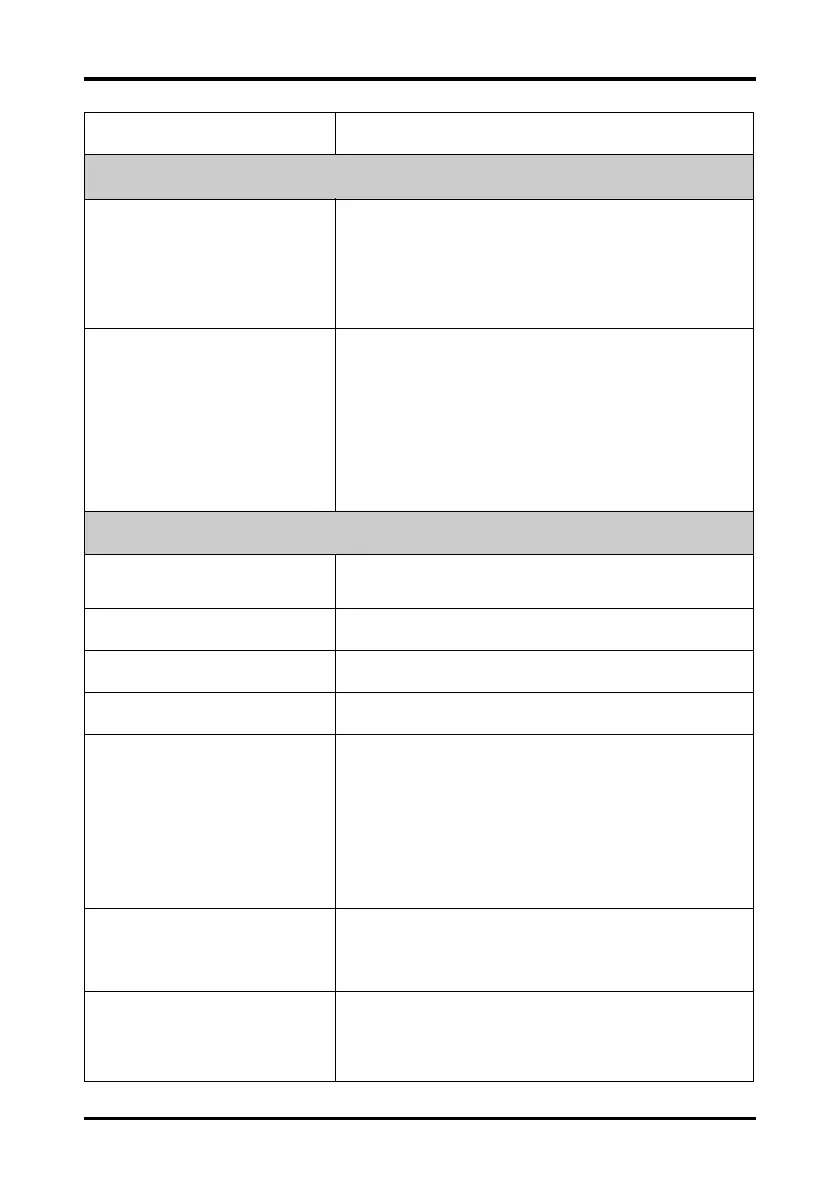Product Specifications Measurement Specifications
TM80 Telemetry Monitor Operator’s Manual A - 11
Defibrillation energy absorption
≤ 10% (100 load)
Pace Pulse
Pace pulse markers
Pace pulses meeting the following conditions are labelled with a
PACE marker:
Amplitude: ±2 mV to ±700 mV
Width: 0.1 ms to 2 ms
Rise time: 10 s to 100 s
Amplitude: ≥ 0.2mV RTI
Pace pulse rejection
When tested in accordance with the IEC60601-2-27: 201.12.1.101.13,
the heart rate meter rejects all pulses meeting the following condi-
tions.
Amplitude: ±2 mV to ±700 mV
Width: 0.1 ms to 2 ms
Rise time: 10 s to 100 s
No overshoot
About 50% pulse of ANSI/AAMI EC13 (5d) can trigger the pulse
detector, the least changing rate is 20 V/s RTI.
HR
Measurement range
Adult: 15 bpm to 300 bpm
Pediatric: 15 bpm to 350 bpm
Resolution
1 bpm
Accuracy
± 1 bpm or ± 1%, whichever is greater.
Sensitivity
160 V (accuracy range: 0.16 mV to 0.21 mV.)
HR averaging method
In compliance with the requirements in Clause 201.7.9.2.9.101 b) 3)
of IEC60601-2-27, the following method is used:
If the last 3 consecutive RR intervals are greater than 1200 ms, the 4
most recent RR intervals are averaged to compute the HR. Other-
wise, heart rate is
computed by subtracting the maximum and minimum ones from
the most recent 12 RR intervals and then averaging them.
The HR value displayed on the monitor screen is updated every sec-
ond.
Tall T-wave rejection capability
When the test is performed based on Clause 201.7.9.2.9.101 b) 2)of
IEC60601-2-27, the heart rate meter will reject all 100 ms QRS com-
plexes with less than 1.2 mV of amplitude, and T waves with T-wave
interval of 180 ms and those with Q-T interval of 350 ms.
Response time to heart rate change
Meets the requirements of IEC60601-2-27: Clause 201.7.9.2.9.101 b)
5).
From 80 bpm to 120 bpm: less than 11 s
From 80 bpm to 40 bpm: less than 11 s
